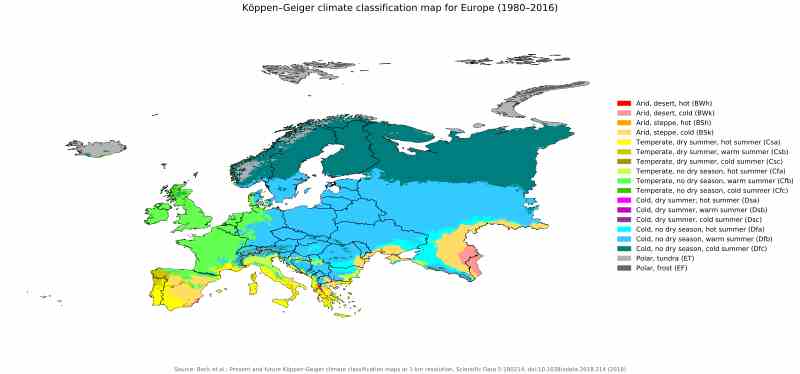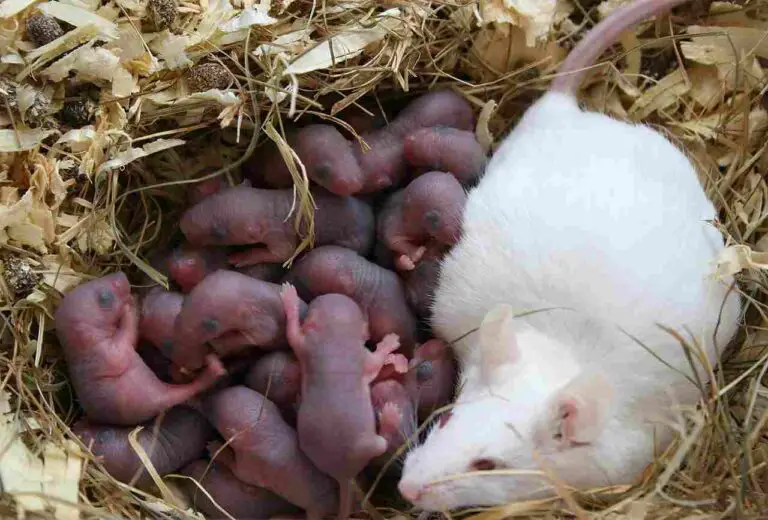Tundra Locations in the World and Their Characteristics Discussed
Tundra locations in the world are East Africa, Antarctica, Asia, Europe, North America, and Siberia.
This study discusses tundra locations in the world and their characteristics;
1). North America (as one of the Tundra Locations in the World)
North America is a major tundra location on Earth, with vast expanses of cold-climatic and tree-less zoned occurring in parts of the continent.
*Types of Tundra in North America
Types of tundra in North America are Arctic and alpine types, respectively.
Arctic tundra occurs in parts of North America like Greenland, northern Canada, and northern Alaska [1].
It mostly covers the northern extremes of the continent, and stretches into the Arctic Circle.
Characteristics of the Arctic tundra include notable occurrence of permanently-frozen soil (called 'permafrost'), dominance of resilient, low-growing plants, and cold climatic conditions.
The Alpine tundra (also called orogenic or mountainous tundra), occurs in mountainous, high-altitude zones within North America.
Places in North America where alpine tundra occurs include; Sierra Nevada in California, and the Rocky Mountains that extend from Canada to Western United States [4].
Some Arctic tundra characteristics occur in the alpine tundra, such as short cool summer and long, cold winter seasons. However, permafrost is not common in the Alpine tundra.

*North American-Tundra Size Comparison
The Arctic tundra is largest in North America; covering extensive land areas from Northern Canada to Alaska in the United States.
It forms part of the larger Arctic circle/biome which stretches over several million-square kilometers.
*Determinant Factors and Specific Location(s) of the Tundra Ecosystem in North America
Factors that determine where tundra ecosystem will occur include;
1. Elevation
2. Latitude
3. Geographic proximity to the Arctic Circle
Tundra ecosystem is mainly found in the northernmost parts of North America.
This includes Greenland, Canada and Alaska.
Arctic tundra can be found above the tree-line/timber line; which is a zone beyond which tree-occurrence is very low due to cold and dry conditions [5].
The alpine tundra may be found in all major parts of North America where mountain ranges and high-elevation zones occur.
*Links to Tundras in Other Locations
The North American tundra has some similarities to tundras in other parts of the world.
North American alpine tundra is very similar to alpine tundras in other orogenic/mountainous zones like the Andes and Alps of Europe.
Biotic and abiotic factors like climate, organic adaptation and vegetation-type are all shared characteristics between these different geographic regions.
The North American Arctic tundra is also similar to the Arctic tundra that occurs in other geographic zones; such as Scandinavia and Siberia. Similarities between the various zones occur in terms of permafrost, climatic conditions, as well as species of tundra animals and plants
Antarctic tundra also shares some characteristics with the Arctic and alpine types of tundra that are found in North America. These shared characteristics include sparse vegetation-growth and cold temperatures.
2). Europe
The tundra in Europe is a treeless and cold ecosystem which may be found in the northern extremes of the continent.
*Specific Location(s) of the Tundra Biome in Europe
As earlier stated, the European tundra is mainly concentrated within the northernmost areas of the continent.
Tundra locations in Europe are mostly enclosed in the Arctic circle; spanning across multiple countries that include Sweden, Finland, Iceland, Russia (which includes Siberia), and Norway [3].
In each of these countries, one may encounter minor peculiarities in the characteristic features of the tundra; although they are mostly similar by reason of geographic (latitudinal) proximity.

*Characteristics of the Tundra in Europe
Characteristics of the European tundra include;
1. Cold winters
2. Relatively-short and cool summers
3. General absence of trees
4. Permafrost occurrence
5. Dominance of low-growing, vascular and non-vascular plants like mosses, grasses, and shrubs
*Links of the European Tundra, to Other Tundra Locations
The Asian and North American, Arctic tundras are similar to the European tundra in some aspects, which include; permafrost occurrence, highly-adapted animals and plants, relatively-low species richness (compared to ecosystems like tropical rainforests), and climatic seasonality.
Alpine tundras in Asia and North America are also similar to the European alpine tundra, in terms of topography, biodiversity, and climate.
The Antarctic tundra is similar to the European tundras in terms of sparseness of vegetation, low relative humidity, and cold temperatures.
3). Siberia (Eurasia) (as one of the Tundra Locations in the World)
The Siberian tundra is also referred to as the Arctic tundra, and occurs in the northern segments of Siberia, which is part of the Eurasian continental zone.
*Specific Location(s) of the Siberian Tundra
Specific locations where the Siberian tundra occurs, include; eastern Russia (which extends from the margin of Europe into the Asian continent), and nearby mountainous ranges within Asia.
Its total area covers several million square-kilometers, although it does not occur as a single extensive biome, but rather as multiple, large fragments.
The Siberian tundra is geographically traversed by the Arctic circle, and has typical characteristics like frigid winter temperatures and vegetative sparseness. Permafrost also occurs.

4). The Global Alpine Tundra
The alpine tundra occurs mainly by reason of elevation above sea level, rather than geographic latitude.
As a result, there are many treeless, frigid zones around the world that can be classified as alpine tundra [2].
Alpine tundra can be described as the most dispersed and versatile type of tundra ecosystem.
Some locations of alpine tundra in the world are;
1. Caucasus Mountains (Georgia, Russia, Azerbaijan; between Caspian and Black Seas (east to west))
2. Tibetan Plateau (Tibet; East Asia)
3. Rift Mountains/East African Mountains (Burundi, Democratic Republic of the Congo, Kenya, Rwanda, Tanzania)
4. Pamir Mountains (Afghanistan, China, Kyrgyzstan, Tajikistan)
5. Himalayas (Bhutan, India, Nepal, Pakistan)

5). Antarctica (as one of the Tundra Locations in the World)
Antarctica is the primary location of the Antarctic tundra, which spans across sub-Antarctic and Antarctic zones.
Some specific areas where the Antarctic tundra can be found are;
1. The Kerguelen Islands
2. South Sandwich Islands
3. South Georgia
These areas are islands that are isolated by intermediate marine ecosystems, but very similar in characteristics.
The Antarctic tundra is small with respect to the entire areal coverage of Antarctica, because the climatic conditions here are desert-like and excessively cold to support any significant vegetation growth or animal life.
For the same reason, many studies do not acknowledge Antarctica as a major tundra location in the world.

Conclusion
Tundra locations in the world are;
1. North America
2. Europe
3. Siberia (Asia)
The major tundra locations are summarized in the table below;
Continent/Continental Zone | Country(s)/Specific Location(s) | Type(s) of Tundra |
Africa | Burundi, Democratic Republic of the Congo, Kenya, Rwanda, Tanzania | Alpine tundra |
Antarctica | Kerguelen, South Sandwich and South Georgia Islands | Antarctic tundra |
Asia | Afghanistan, Bhutan, China, India, Kyrgyzstan, Nepal, Pakistan, Tajikistan, Tibet | Alpine tundra |
Europe | Sweden, Finland, Iceland, Russia (which included Siberia), Norway | Arctic, Alpine tundras |
North America | Greenland, Canada, Alaska | Arctic, Alpine tundras |
Siberia | Georgia, Russia, Azerbaijan | Siberian, Alpine tundras |
References
1). Bhatt, U. S.; Walker, D.; Raynolds, M. K.; Bieniek, P.; Epstein, H. E.; Comiso, J. C.; Pinzon, J. E.; Tucker, C. J.; Polvakov, I. V. (2013). "Recent Declines in Warming and Vegetation Greening Trends over Pan-Arctic Tundra." Remote Sensing 5(9):4229-4254. Available at: https://doi.org/10.3390/rs5094229. (Accessed 13 June 2023).
2). Knowles, J. F.; Blanken, P. D.; Lawrence, C. R., Williams, M. W. (2019). "Evidence for non-steady-state carbon emissions from snow-scoured alpine tundra." Springer Nature, Nature Communications 10(1):1306. Available at: https://doi.org/10.1038/s41467-019-09149-2. (Accessed 13 June 2023).
3). Omazic, A. W.; Aurosell, C.; Fedorov, V.; Hagström, Å.; Kantanen, J., Leijon, M.; Mørk, T.; Nordtun, C. S.; Nymo, I. H.; Þórisson, S.; Reilas, T.; Rockström, U.; Sánchez, J.; Thorarinsdottir, R.; Tryland, M.; Wensman, J. J.; Albihn, A. (2019). "Seroprevalence of pestivirus in Eurasian tundra reindeer in Finland, Sweden, Norway, Iceland and Russian Federation." Infection Ecology & Epidemiology 9(1):1682223. Available at: https://doi.org/10.1080/20008686.2019.1682223. (Accessed 13 June 2023).
4). Vincent, K.; Holland-Moritz, H.; Solon, A. J.; Gendron, E. M. S.; Schmidt, S. K. (2022). "Crossing Treeline: Bacterioplankton Communities of Alpine and Subalpine Rocky Mountain Lakes." Front Microbiol. 2022 Jan 3;12:533121. Available at: https://doi.org/10.3389/fmicb.2021.533121. (Accessed 13 June 2023).
5). Virtanen, R.; Oksanen, T.; Cohen, J.; Forbes, B. C.; Johansen, B.; Käyhkö, J.; Olofsson, J.; Pulliainen, J.; Tømmervik, H. (2016). "Where do the treeless tundra areas of northern highlands fit in the global biome system: Toward an ecologically natural subdivision of the tundra biome." Ecology and Evolution 6(1):143-158. Available at: https://doi.org/10.1002/ece3.1837. (Accessed 13 June 2023).



